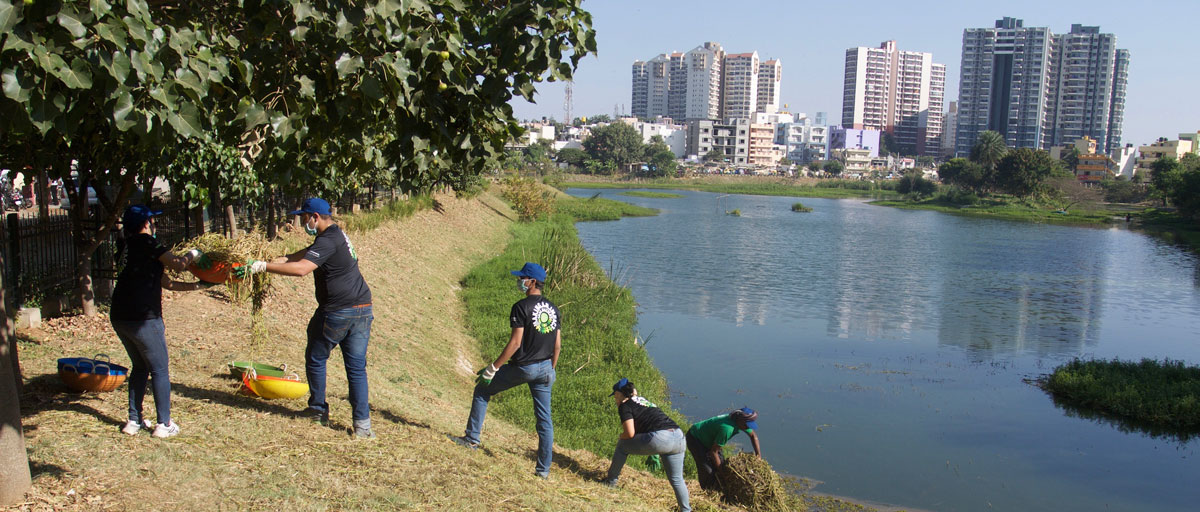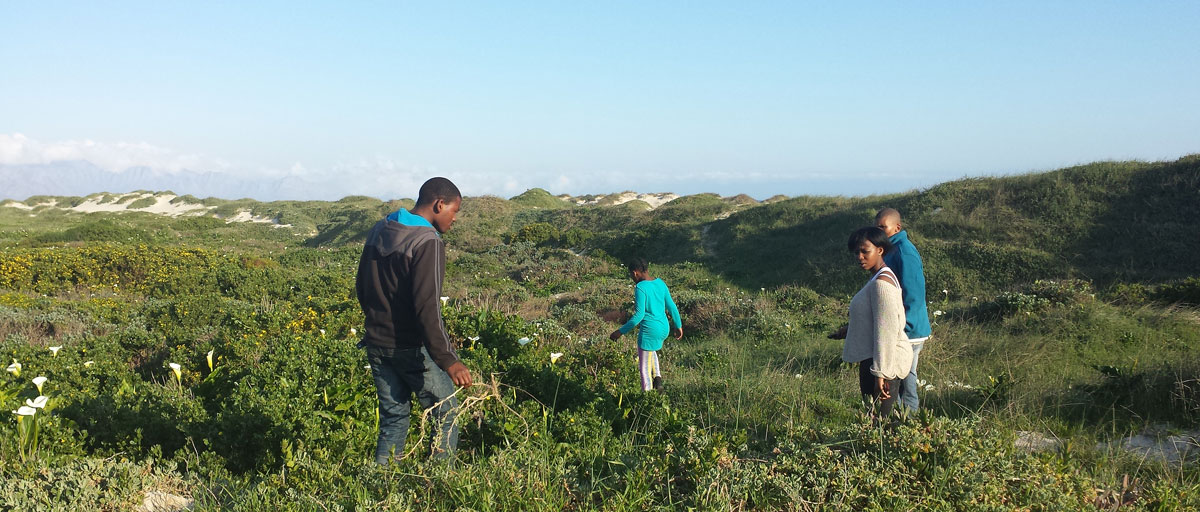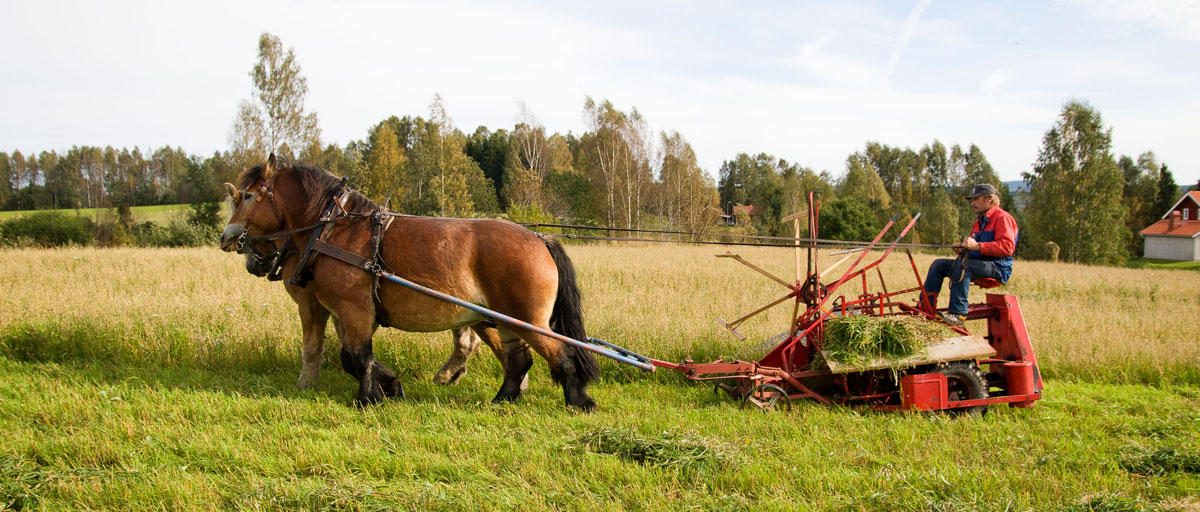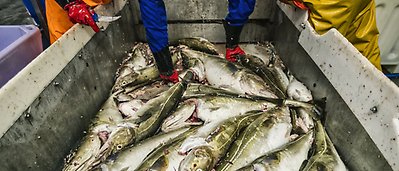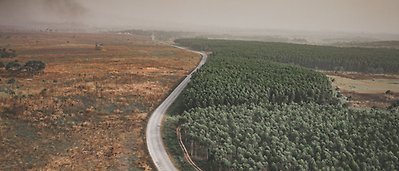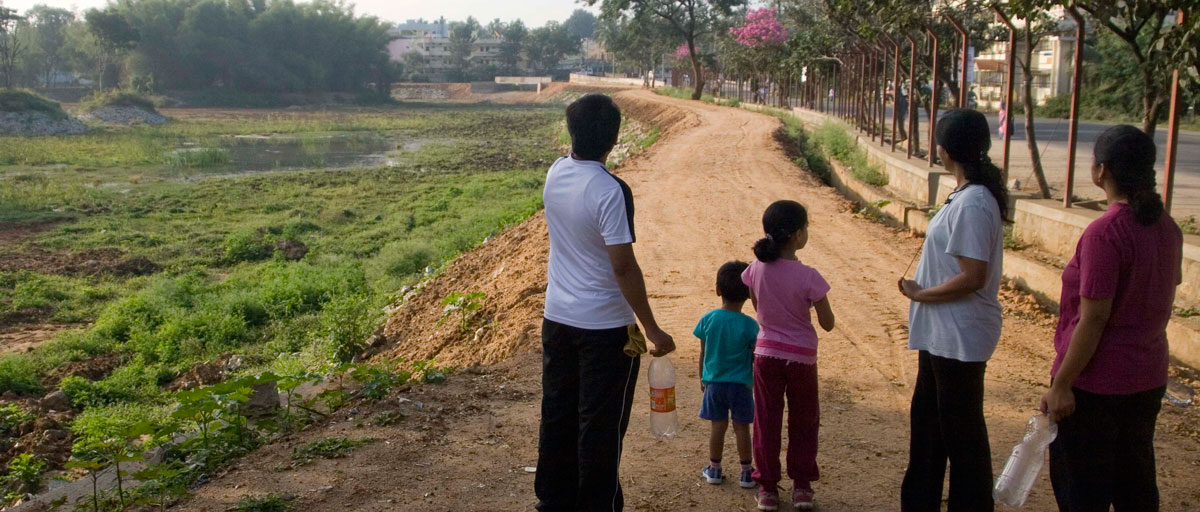
A recently published special feature in Sustainable Science, offer a better understanding of why ‘sense of place’ matters and how it can be applied practically, particularly in the Global South where there is a dearth of such information. Photo: J. Enqvist
Bildtext får vara max två rader text. Hela texten ska högerjusteras om den bara ska innehålla fotobyline! Photo: B. Christensen/Azote
sustainability concepts
Making sense of place
Special feature in Sustainability Science illustrates how ‘sense of place’ as a concept can contribute more effectively to understanding environmental change
- The special feature focuses on sense of place as an analytical tool in SES research and presents empirical work done in 12 countries across six continents
- Editors worked with a broad set of colleagues whose work in operationalizing ‘sense of place’ in multi and interdisciplinary projects provides meaningful insights
- Four key research areas were identified that future research could tackle
Have you ever wondered about the deep attachment you feel to certain places? It could be the backyard of your childhood home or the riverside in the town your grandparents lived in. Such feelings resonate well with an increasingly acknowledged concept in sustainability called ‘sense of place’. This is also the focus of a special feature newly published in the journal Sustainability Science.
The special feature has been edited by centre researchers Vanessa Masterson and Maria Tengö together with Richard Stedman from Cornell University and Johan Enqvist (who did his PhD at the centre but is now with the University of Cape Town).
Why sense of place matters
In the editorial, Masterson and her colleagues introduce the various case studies in the feature and offer a better understanding of why ‘sense of place’ matters and how it can be applied practically, particularly in the Global South where there is a dearth of such information. "In this special feature, we mobilize theory and empirical findings on sense of place to shed light on the role of such relationships in the dynamics of social-ecological systems," says lead author Vanessa Masterson.
The connections between people, place and nature help us understand social motivations and develop pathways towards sustainability.
Vanessa Masterson, lead author
Strong group of scholars
The feature takes forward ideas presented in two previously published review articles by Stedman (2016) and Masterson et al. (2017) that discussed how the “sense of place literature provides the conceptual and methodological tools for SES research.”
“We’re thrilled to have had the opportunity to further develop the links between sense of place and resilience with such a strong group of scholars," says Richard Stedman.
Seeing a need to root these understandings empirically, research partnerships were fostered through the Programme for Ecosystem Change in Society (PECS) and Resilience Alliance networks to produce this feature.
“We wanted to engage with colleagues, whose work to operationalize sense of place constructs in multi- and interdisciplinary projects we admire.” Vanessa Masterson
A diversity of social-ecological challenges are addressed such as flood risk and management, conservation and development, and waterbodies management in both developed and developing contexts. Similarly, the approaches and methods used by the different researchers vary. This makes the feature’s insights relevant across multiple socio-economic contexts and opens up a discussion across the traditional but outdated qualitative vs. quantitative divide.
Four key themes
The authors identify four key themes that the articles cover and that future research on ‘sense of place’ can build upon:
1. Whose place meanings are favoured and why?
Masterson and her colleagues elaborate on using ‘sense of place’ as a lens to unpack conflicts over how and why certain resource use decisions are made. Case-studies highlight ways in which some people’s place meanings come to dominate over others and how this influences the specific interventions chosen for “enhancing sustainability.”
2. Changing SES and their influence on sense of place
With nature, change seems to be the only constant. It is, however, vital to identify the drivers for change in order to understand what type of stewardship is needed. By focusing on a dynamic view of nature one understands how place meanings and attachments evolve over time. Changed meanings, as the case-studies in the articles highlight, can at times halt resource degradation or even motivate restoration: thus, enhancing the range of previously held place meanings.
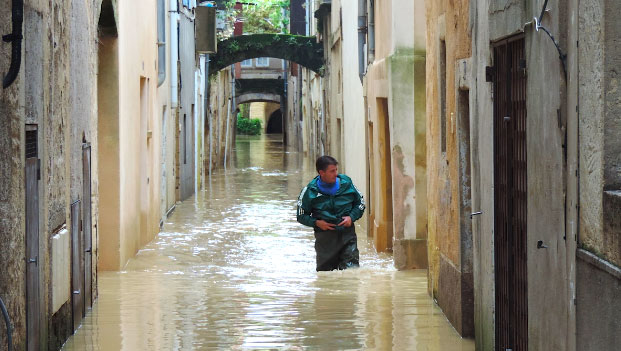
Flooding in Sommières, France where the river Vidorle is often personified by town residents and described as a lively character central to town life. Photo: C. Mollaret/Goal Gard
3. Place meanings and attachment can start and maintain social-ecological traps, as well as influence transformative change for stewardship
Rapid urbanisation and social mobility mean that places are altered faster than people’s ability to adapt sustainably to the newly held place meanings. In other cases, ecological degradation is reinforced because newcomers lack the historical understanding to perceive alternate uses of places: for example, not knowing that today’s concrete structures occupy what was previously a functioning lake in Bangalore.
“Considering place meanings can help describe and predict how stewardship activities can play a role in adapting to, coping with and transforming in response to environmental challenges,” says Enqvist.
4. Scaling up stewardship and sense of place
The final theme seems highly relevant to addressing global problems such as climate change as it studies the relationship between ‘sense of place’ and the scale at which place associations are made. For example, does having a deep attachment to a neighbouring forest provide the impetus to save forests across the world?
The authors conclude that future research could further benefit from exploring the interlinkages of these themes: some articles in the feature already exhibit that. Importantly, a case is made for having a stronger evidence base from the Global South to sharpen current findings.
“We hope that this collection of articles will over time form part of an expanding empirical base that continues to refine this approach in the service of nurturing active engagement and care of our important places in the face of rapid environmental change,” says Tengö.
Masterson, V.A., Enqvist, J.P., Stedman, R.C. & Tengö, M. 2019. Sense of place in social-ecological systems: from theory to empirics Sustainability Science, 14:555-564
